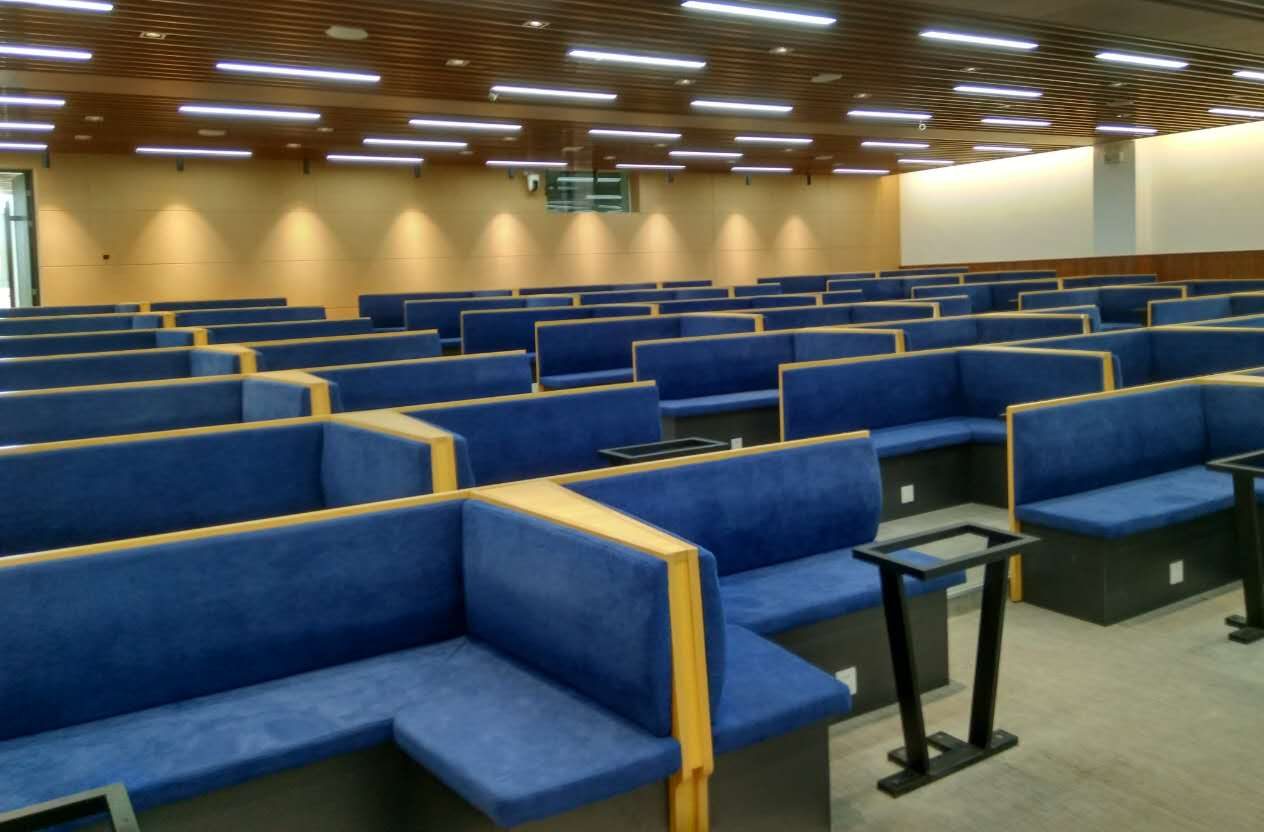Will all the changes to the school change us?
The stairwell was stunning. Gone was the flaked paint on the metal guardrails, replaced by a low wall of sleek polished wood; away was the blotched blue flooring and plain white walls, and in its place were beautiful mahogany designs.
The stairwell was but one addition to SMIC’s flurry of physical changes, including the bathrooms, the gym, and the lounge a few years back. Some veteran SMIC teachers remember students’ excitement when the gym was given a drastic makeover. Most students remember their ecstasy when our cheap tourist trap-esque bathrooms metamorphosed into hotel-level lavatories. To put it in analyst lingo, reception was overwhelmingly positive.
But what went wrong this time? The stairwell is beautiful. The cafeteria is beautiful. The music room lobby is beautiful. But this time, students had a mix of emotions. Although we loved the changes, many of us thought we sensed a loss of something else. With beautiful hallways and lounging areas, SMIC just wouldn’t be the same SMIC anymore. Even the name change of our school, from SMIC to SMIC-I, marked a re-branding that goes beyond a superficial level. And all the changes to the outside provoked questions within: Are we changing as a culture? Are we changing as a community?
The worry was that recent transformations to SMIC would not only change our appearance, but also alter our identity as a student body.
Of the many changes brought to the school this year, the most immediately evident was the change to the facilities. Over the summer, the school had been working hard to improve both the appearance and convenience of the facilities—including the improved furniture, more professional auditoriums, and newly installed ACs in the locker area. SMIC now looks completely different than it did just three years ago, when the environment seemed much drabber. But what does this mean for our school? The renovations may in fact benefit both our learning environment and public image; nevertheless, a feeling of uncertainty still seems to hover over many of us.
The most controversial change, of course, was the newly-implemented uniform policy, in which students will now be “wearing button-up shirts, pleated skirts, semi-formal pants, blazers, ribbons and neckties on every Monday morning,“ explained Mrs. Bethany Bates, the Student Affairs Director. “Uniforms represent a school’s badge of pride and unity,” she contended. “[They] could help revitalize the school spirit and show respect to the important ceremonies held on campus. [With uniforms,] other people could easily identify us as a single whole”.
However, some students disagree. Besides the petition published by the Student Council signed by 321 students, parents, and teachers who voiced their opposition to uniforms, this change (once its complete) will also represent a loss of personal choice and loss of students’ ability to express themselves as individuals.
Last but not least, SMIC is rebranding its long-held English Track moniker to SMIC International, or SMIC-I (until it’s official). This shows how our school is moving towards becoming a more international school-like community. But what necessitated this change? According to Dr. Kelley Ridings, Principal of SMIC-I, “When WASC accredited our school, they asked that we have a name change.” SMIC-I was a compromise between WASC expectations and Chinese legal requirements. Through this change, Dr. Ridings emphasized that we will no longer be mistaken as a bilingual school, instead showing the excellent English-language curriculum that SMIC-I provides.
“SMIC’s goal is to provide a world-class education,” says Dr. Ridings. “To serve these goals, changes such as the ones we have been seeing, like accreditation and the rebranding, are critically important to our school’s image locally and globally.”
Is it wrong? Is it wrong to try to strive for a more elegant campus? For a more respectable-looking student body? By no means! It is all well-intentioned, and not bad on its own; it is a step toward joining the international community as a standard, recognizably international school. However, in doing so, it must be understood that we would most certainly be changing ourselves to some degree; with the general appearance, the air of the school itself must change, and so just as in any instance of large-scale transformation, it is natural to feel apprehensive.
SMIC-I will no longer be what we have affectionately termed “the Ghetto school”, in all its humility and ruggedness. It will become something else, a something we are not yet fully acquainted with. It is vital, then, as our school continues to reshape itself, to remember who we are, and to hold on to that in the midst of so much change.
Or, in the hopeful words of Vincent Choi (12C), “It’s going to impact how other schools view us, but not how we see ourselves.”

